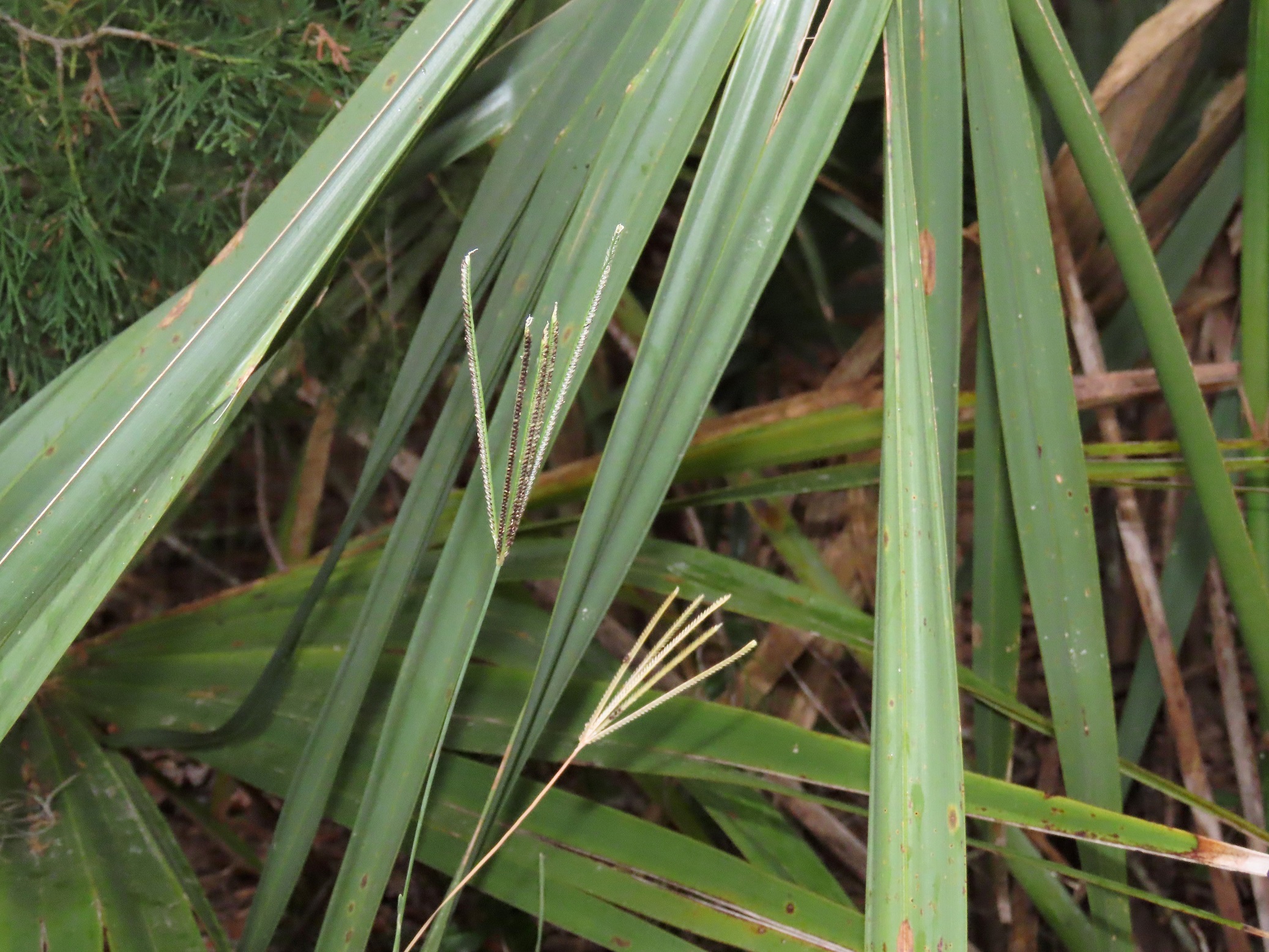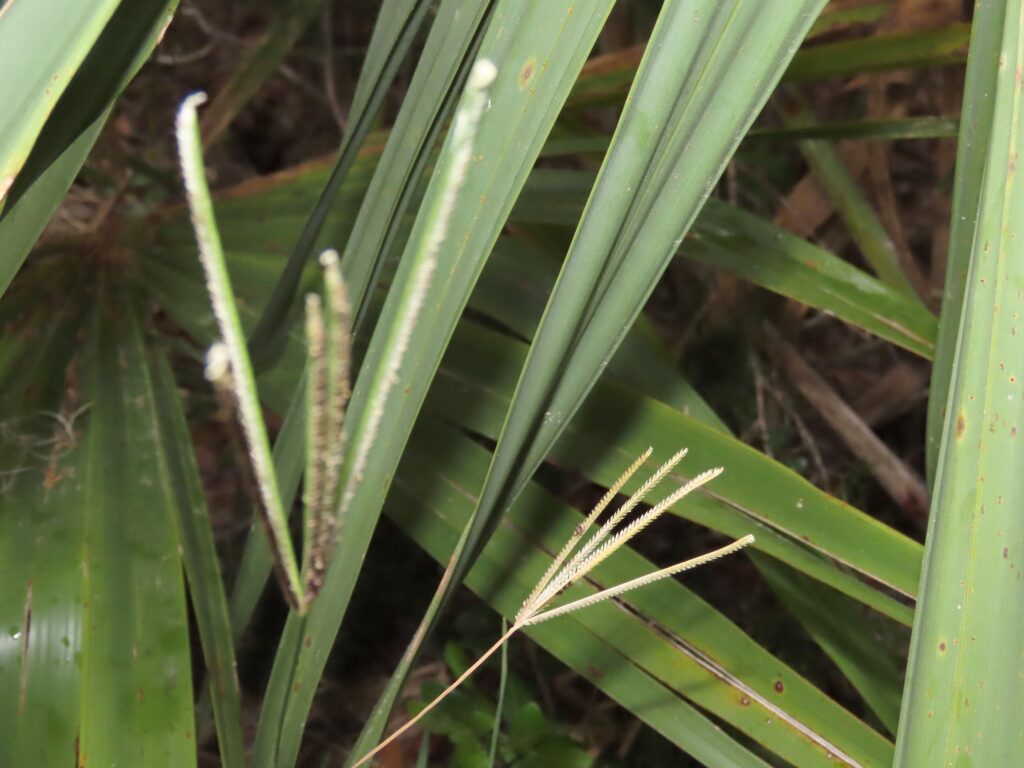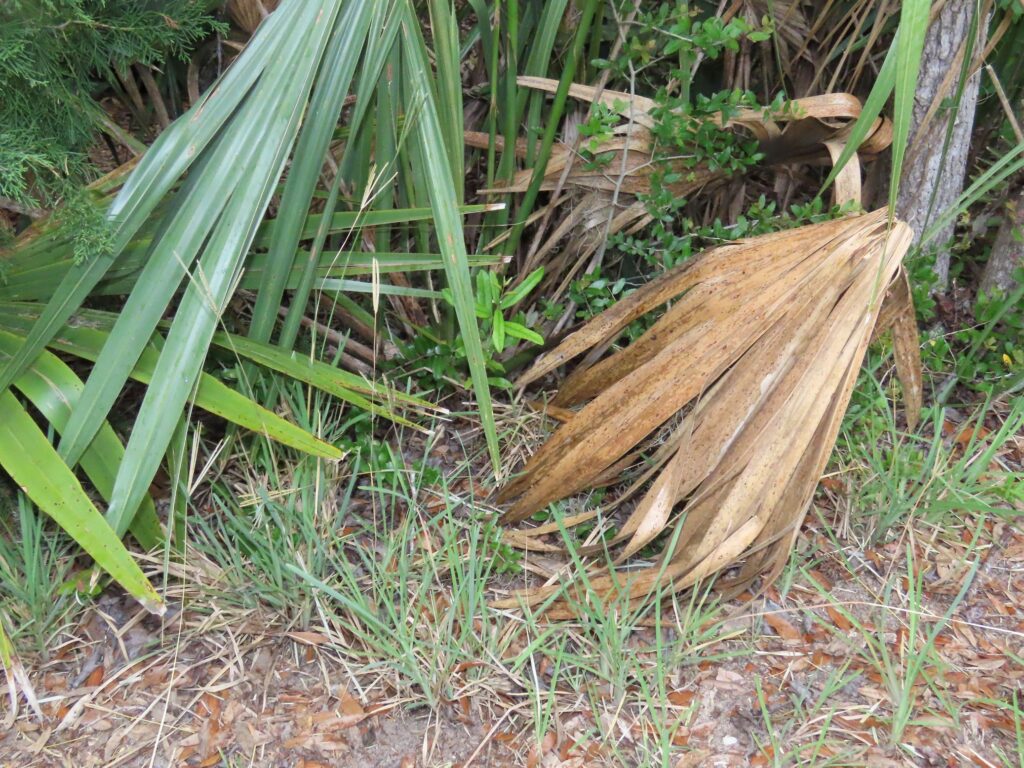




This week for Flora and Fauna Friday we spy a native grass just beyond the surf and rising above the turf, Pinewoods Fingergrass (Eustachys petraea).
Pinewoods Fingergrass is native to the southern coast of the United States, from Texas through North Carolina. Here in South Carolina, it’s found in all our coastal counties and throughout our Sea Islands. It thrives on our young marine soils, coarsely sandy and rich in calcium from pulverized shells. I most often encounter it on Barrier Islands in healthy maritime forests, more inland on sandy ridges in the pineywoods, or along the shoulders of limestone roads in either.
Pinewoods Fingergrass is a perennial warm-season grass. It spreads weakly through running stolons into a loose clump but mainly disperses about the landscape through seeds. Its leaves are a soft blue-green and grow upward to about a foot in length. It begins to flower in mid-spring and continues through the end of summer. Its innocuous grass flowers chain together into one-sided comb-like spikes. Often their flower head is comprised of five spikes, lifted upward to two feet on a central stalk. This flower stalk arrangement resembles a hand reaching upwards to the sky and it provided the plant its “fingergrass” common name.
Pinewoods Fingergrass is a hardy native grass and can be a great addition to coastal yards. It does well in both full sun and partial shade. It’s well adapted to our coarse, sandy sea island soils with great drought tolerance and high resistance to saltwater intrusion and salt spray. As a grass, it’s mainly ignored by deer and likely a host plant for several species of our Grass Skipper butterflies. Unlike nonnative turf grasses, Pinewoods Fingergrass spreads sparsely and politely, allowing it to play nicely wildflowers in native plant gardens and alternative lawns, without taking them over.